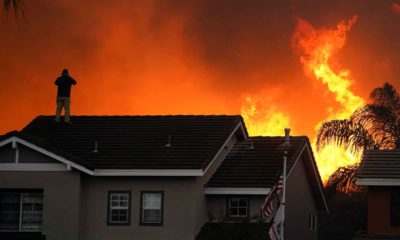Published
6 years agoon
By
AP News
WASHINGTON — The ozone hole near the south pole this year is the smallest since it was discovered, but it is more due to freakish Antarctic weather than efforts to cut down on pollution, NASA reported.
This fall, the average hole in Earth’s protective ozone layer is 3.6 million square miles. That’s down from a peak of 10.3 million square miles in 2006.
The 1987 international Montreal Protocol — the only United Nations treaty ratified by every country on Earth — banned many of the chlorine compounds used in refrigerants and aerosols. The ban resulted in a slightly smaller ozone hole in recent years, but this year’s dramatic shrinking isn’t from those efforts, Newman said.
“It’s just a fluke of the weather,” said University of Colorado atmospheric scientist Brian Toon.
Chlorine in the air needs cold temperatures in the stratosphere and clouds to convert into a form of the chemical that eats ozone, Newman said. The clouds go away when it warms up.
But this September and October, the southern polar vortex — which just like the northern one is a swirl of cold high-speed winds around the pole — started to break down. At 12 miles high in the atmosphere, temperatures were 29 degrees warmer than average. Winds dropped from a normal 161 mph to about 67 mph, NASA reported.
This is something that happens on occasion, occurring in 1988 and 2002, but not this extreme, Newman said.
“We got a little bennie (benefit) this year,” he said.


Walters: After COVID-19, Drought Threat Still Looms


Weekend Storm Brings Needed Moisture to Valley. Forecast Shows More on the Way.


Opinion: How to Create an Easier Path to Climate Goals Through Electric Vehicles


UN Calls on Humanity to End ‘War on Nature,’ Go Carbon-Free


SpaceX Launches 2nd Crew, Regular Station Crew Flights Begin


UN Weather Agency: Moderate to Strong La Nina This Year




